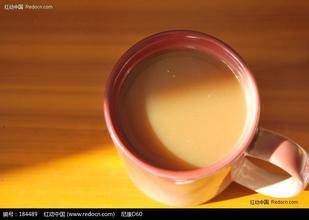Introduction to Cedar Motad Manor Coffee with suitable mellowness and Fine Coffee
In July 1991, EGF hosted a national conference with the participation of more than 20 political and ethnic organizations. The meeting adopted the Transitional Charter and elected an 87-member House of Representatives, with EGF Chairman Meles Zenawi as President and President of the Transitional Government. A transitional government was established. Eritrea (formerly Eritrea Province of Ethiopia) became a sovereign country in Ethiopia through a referendum under the supervision of the international community on May 24, 1993. The mountainous plateau in Ethiopia is dominated by the mountain plateau, with a large subordinate to the Ethiopian plateau. The Midwest is the main body of the plateau, accounting for 2x3 of the whole territory. The Great Rift Valley of East Africa runs through the whole territory, with an average elevation of nearly 3000 meters, known as the "roof of Africa". The terrain around the plateau is gradually declining. The Darol depression in the north fell to 113 meters below sea level, the lowest point in the country. The coast of the Red Sea is a narrow banded plain. Deserts and semi-deserts in the north, south and north-east account for about 25% of the country's area. At 4623 meters above sea level, Dashan Peak in the Ximen Mountains is the highest peak in Ethiopia. By 2012, Ethiopia has a population of 91 million, making it the second most populous country in Africa. The population growth rate is 2.9%. [7]
There are more than 80 ethnic groups in the country, mainly Oromo (40%), Amhara (20%), Tiger (8%), Somalia (6%), Sidamo (4%) and so on. 45% of the residents believe in the Ethiopian Orthodox Church, 40-45% believe in Islam, 5% believe in Protestantism, and the rest believe in primitive religions.
As of 2012, the three most populous states were Oromo, Amhara and the southern state Ethiopia with a round national emblem. A glowing golden five-pointed star on a round blue face. Blue symbolizes peace; the pentagram represents diversity and unity, and the light symbolizes prosperity and prosperity. The whole symbolizes the hope and nationality of the country, the equality and unity of all religious ethnic groups, and live in harmony. [8]
National flower
Sidamo Coffee beans are grayish, thick in some places and small in others, with soft and strong acidity, mellow and sweet and spicy. It is one of the courtyard coffees in the highlands of southern Ethiopia. It is different from ordinary African coffee in that Sidamo has clear acidity, smooth taste, and delicate floral smell. Sidamo is light green, small beans, oval growth, full fruit, good average quality, fragrant and mellow smell, a drop of taste, endless aftertaste, wild beauty. It is elegant but playful, mild and pleasant on the palate, and has a strong taste impact with the bright lemon fruit acid. the taste is unique, mellow, chic and delightful on the palate. the slowly rising end rhyme contains chic sweetness. the greatest advantage of the place is that the soil fertility is maintained through the cycle of organic matter, using the withered leaves of the surrounding trees or the residual roots of plants as fertilizer. Therefore, the coffee produced in cities and towns has obvious differences and characteristics. In 2010-2012, it continuously obtained the high score of CR92~94, the authoritative coffee evaluation website in the United States. Thus it can be seen that Sidamo grows in the southernmost Ethiopian plateau between 4600 and 7200 feet above sea level (Sidamo province). It is a famous boutique coffee area in southern Ethiopia, bordering Kenya, southeast of Gemma, just south of the capital, usually sweet and loved by most people. its annual output is about 225000 bags / 60kg, with a smaller bean body than Longberry, with gray in the green, and in the sun-drying field of Sidamo. Coffee is placed in hemp net wooden frame, workers take turns in the sun exposure, manual stirring coffee, sun Sidamo is usually marked with G4 exit, washing Sidamo because of the more perfect sun treatment process, so most of the G2 export more sun Sidamo taste close to the flower flavor, but about some soil flavor. Water washing has a nutty fruit aroma with a slight cocoa aroma, but what the two have in common is smooth taste and viscosity, comfortable and pleasant acidity and fragrance. Light or medium roasting is suitable for individual products, while medium or deep roasting is suitable for blending coffee and good Espresso base.

Important Notice :
前街咖啡 FrontStreet Coffee has moved to new addredd:
FrontStreet Coffee Address: 315,Donghua East Road,GuangZhou
Tel:020 38364473
- Prev

Papua New Guinea Bird of Paradise Manor Coffee Flavor Features
Papua New Guinea is the second largest country in the South Pacific after Australia in terms of population and area. It consists of New Guinea in the north and Papua in the south. It borders Irian Jaya province in Indonesia to the west and Australia across the Torres Strait to the south. The Melanesian Islands are rich in forest resources, covering an area of 36 million hectares of tropical virgin forest, about 30 million hectares.
- Next

Introduction to the clear flavor of Costa Rican Goddess Manor Coffee
It is called the legislative assembly, the unicameral system, the barber assembly, the exercise of legislative power and other important functions and powers. major government decisions need to be examined and approved by the legislative assembly, which is called the first power of the state. it is the highest legislature in the country, composed of 57 members. Members are directly elected by voters for a term of four years and are non-re-elected. The current legislative assembly was formed in May 2010, of which the new session was established on February 2, 2014.
Related
- Does Rose Summer choose Blue, Green or Red? Detailed explanation of Rose Summer Coffee plots and Classification in Panamanian Jade Manor
- What is the difference between the origin, producing area, processing plant, cooperative and manor of coffee beans?
- How fine does the espresso powder fit? how to grind the espresso?
- Sca coffee roasting degree color card coffee roasting degree 8 roasting color values what do you mean?
- The practice of lattes: how to make lattes at home
- Introduction to Indonesian Fine Coffee beans-- Java Coffee producing area of Indonesian Arabica Coffee
- How much will the flavor of light and medium roasted rose summer be expressed? What baking level is rose summer suitable for?
- Introduction to the characteristics of washing, sun-drying or wet-planing coffee commonly used in Mantenin, Indonesia
- Price characteristics of Arabica Coffee Bean Starbucks introduction to Manning Coffee Bean Taste producing area Variety Manor
- What is the authentic Yega flavor? What are the flavor characteristics of the really excellent Yejasuffi coffee beans?

